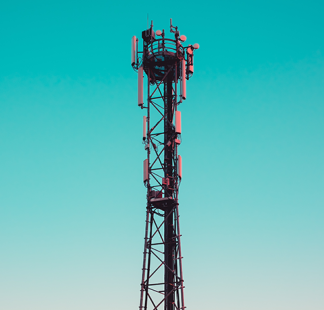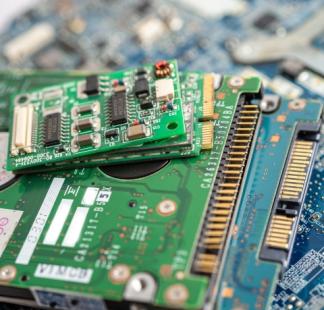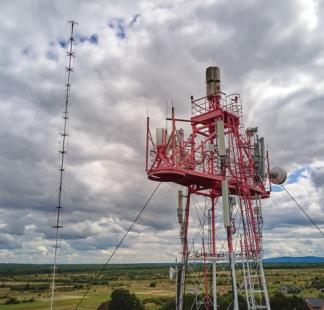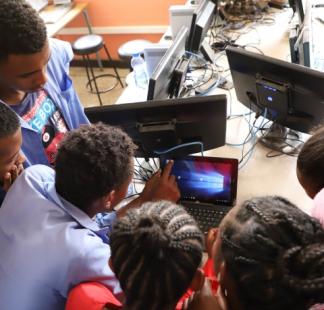- Emmanuel NIYIKORA
- Paulinus Okechukwu UGWOKE
Intermediate
- Bank transfer
- Credit card
Description
4G has been a driver to transform the world into a single global telecommunication industry with lots of improvements in connectivity, security and data management. As the demand got higher for speed, ultralow latency and massive number of device connections, a new generation technology was required to meet all the demands. The key features and importance of 5G New Radio (NR) system is set in International Mobile Telecommunication-2020 (IMT-2020) Standards, recommended by International Telecommunication Union-Radiocommunication Sector (ITU-R) in 2015. 5G systems are deployed in a variety of spectrum bands: below 1 GHz, between 1 and 6 GHz, and beyond 6GHz in the millimeter wave (mmWave) frequency range. 5G New Radio (NR) is the first mobile technology generation to make use of the millimeter spectrum. One important characteristic of mmWave spectrum is its potential to support large bandwidths and high data rates that are ideal for increasing the capacity of wireless networks. mmWave can provide new and enhanced experiences with multi-Gbps (Giga bits per second) data rates, low latency and virtually unlimited capacity. 5G networks in mmWave are mainly targeted for urban environments to provide high data rate services. This course, firstly presents the standardization landscapes as defined by 3GPP, focusing on the sequence of Releases of the standards in migration towards 5G. From the ongoing Releases, Phase One, Release-15, focused on the 5G New Radio (5G NR) requirements to address the more urgent subset of the commercial needs. Therefore, the 5G NR design should be forward compatible in order to guarantee that additional features can be added transparently in later Releases. The novelty of 5G is the integration of multiple networks serving diverse sectors, domains and applications, such as multimedia, virtual reality (VR) and augmented reality (AR), machine to machine (M2M) and Internet-of Things (IoT), automotive applications, smart city, etc. The diversity of the 5G applications and their related service requirements in terms of data rate, latency, reliability, and other parameters leads to the necessity for operators to provide a diverse set of 5G networks. Therefore, this course discusses the technologies, implementation and applications of 5G systems.
No prior knowledge or qualification is required to register for this course, considering the given target population.
Upon completion of this course, participants will be able to:
Explain the 5G system in succinct manner;
Identify the key elements of the 5G mobile network;
Describe the growths on 5G in relation to other emerging technologies;
Identify enhancement requirements for migration from LTE to 5G;
List and describe major key features in 5G mobile network;
Evaluate the end-user experience on the use 5G mobile network applications;
Demonstrate the acquired skills on 5G networks in managerial decision making.
The course (2 weeks duration) study method involves the following:
Course Materials: The relevant course material (Presentations) and pre-recorded video is made available on the ITU Academy learning portal at the beginning of the course to facilitate self-study. Each week is based on 2 hours of lectures-presentations per week.
Online Discussion Forums: discussion forums are organized weekly at the ITU Academy based on discussions topics and case studies. Students are highly encouraged to participate and interact with instructors and other students (e.g., forum participation, Moodle messenger, etc.).
Chat Sessions: weekly live chat sessions via Zoom platform (2pm CEST) with the students to facilitate questions about the material covered for the week and the assignments. The dates for the live chat session(s) will be communicated to participants on the first day of the course.
Quizzes: One mandatory online quiz (i.e., multiple choice questions) at the end of each week.
Assignment. A downloadable Word document Template is provided for submission case study research assignment on the ITU Academy.
The participants are evaluated according to their substantive mandatory posts on the discussion forum, active participation in the online chat sessions, reflecting both the quantity and quality of time spent on the course. Two quizzes at the end of each week (i.e., week 1 and week 2), and one individual assignment to be submitted and graded. Templates outlining the format for the assignment submission are provided on the ITU Academy platform. Each quiz has multiple choice questions. The maximum grade for the course is 100 points. The evaluation details and criteria for earning certificates are as follows.
A total score of 70% and above is required to obtain the ITU course completion certificate, through the following evaluation parameters:
Two quizzes 50%
Individual Assignment 20%
Two Chat Sessions 15%
Two Discussion Forums 15%
WEEK 1/ MODULE 1
5G Network Overview
5G NR Frequency Bands
Potential Bands in Early 5G
Deployments of Scalable Numerology
ITU-R 2020 Performance Targets
WEEK1/ MODULE 2
The 5G System (5GS)
The three main components for 5GS are:
5G Core Network (5GC),
5G Access Network (5G-AN),
User Equipment (UE)
5GC Architecture Reference Model
5GC Network Building Blocks
WEEK 1/ MODULE 3
5G New Radio (NR) Network Interface
5G NR RAN Architecture
5G Architecture: Native Control and User Plane Separation (CUPS)
E-UTRA New Radio Dual Connectivity (EN-DC)
Architecture Options for NR deployments
Migration Roadmap from 4G to 5G
3GPP 5G Multi-Access RAN Architecture
Basic Technologies for 5GC:
Software-Based Architecture (SBA)
Software Defined Networking (SDN)
Network Function Virtualization (NFV)
Benefits of Network Function Virtualization
Cloud-Native Architecture
What is Cloud Native Architecture
5GC Cloud Native (Phase 2)
5GC Cloud Native Enhancement (Phase 3)
Typical Case Study scenario: using Samsung 5G Core Cloud Native Architecture
Multi-access Edge Computing (MEC)
MEC deployment scenarios
WEEK 2/ MODULE 4
5G Network Slicing (NS)
What is Network Slicing
Objectives of Network Slicing
Key Features of 5G Network Slicing
5G Network Slicing for Verticals
Architecture of Public networks and industry networks
WEEK 2/ MODULE 5
5G Applications and Use Cases: Broadly grouped into three categories:
CATEGORY 1- Enhanced Mobile Broadband (eMBB):
This category is all about data (data and Capacity).
eMBB aims to meet the people's demand for an increasingly digital lifestyle, and focuses on Multi-User interaction, Augmented Reality (AR), and context recognition as the essential features for this category of use cases.
CATEGORY 2: Ultra-Reliable Low Latency Communication (uRLLC)
This category is all about reliability and security (data and capacity)
CATEGORY 3: Massive Machine-Type-
Communication (mMTC)
This category is all about cost efficiency and massive connectivity.
WEEK 2/ MODULE 6:
Key Features for Beyond 5G











